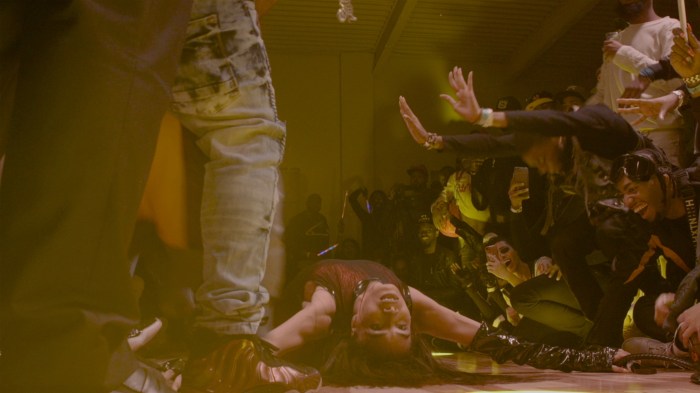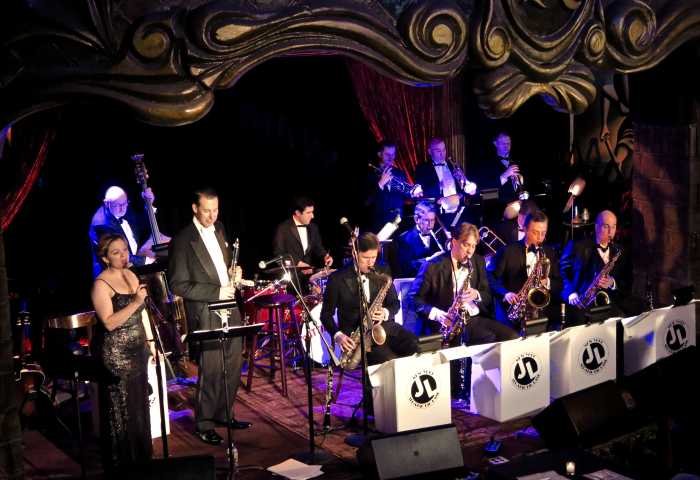In “Eileen,” adapted by director William Oldroyd from Otessa Moshfegh’s novel, blood is the only force capable of uprooting the puritan repression of 1960s New England. Ari Wegner’s cinematography is so grainy that fuzz practically drips off the screen into the audience. You can imagine exactly how badly the boy’s penitentiary where Eileen (Thomasin Mckenzie) works and the house she shares with her perpetually drunk father (Shea Whigham) must smell. Eileen’s body becomes the warzone for her conflicts, played out in the film’s color design. Watching a couple have sex in a nearby car in a landscape bleached white by winter, she tries to control her own desires by picking up snow and sticking it down her pants. Red becomes the symbol of her need to turn to violence for her emancipation, down to her changing taste in clothes and the bleeding cut on her cheek in the final scene.
“Eileen” presents a meeting between two female archetypes. Eileen is mousy, more childlike than her 24 years, and lives under her father’s thumb. She self-medicates with sugar, pouring a huge amount into her coffee. Rebecca (Anne Hathaway), who enters a new job as the penitentiary’s psychologist, steps into her life as though she were a visitor from Hollywood. With glamorous makeup and blonde hair, she looks like Marilyn Monroe and talks like Kathryn Hepburn. Her faintly mid-Atlantic tone contrasts with the other characters’ thick Boston accents. Obviously drawn towards each other, they start spending time together. Eileen begins to use makeup and dress nicer, as though trying to look prettier to please Rebecca. However, the last half hour swerves away from their love story, with a twist that’s bound to anger some spectators.
“Eileen” is Oldroyd’s follow-up to his 2016 “Lady Macbeth,” and he sees it as a natural continuation. Moshfegh’s “Eileen,” her first novel, undoubtedly benefited from the post-“Gone Girl” wave of books about messy, violent women, but its commitment to its protagonist’s subjectivity stands out. The film gets rid of the novel’s device of an elderly Eileen’s recollections of her youth. The film’s muted colors reflect Eileen’s mental images, but Oldroyd goes even further by staging her daydreams of suicide and murder.
Eileen’s father gives a speech about how some people are the main characters in life and others are built to sit on the sidelines. He obviously means that his daughter is one of the latter, but Rebecca seems like one of the former. He doesn’t realize just how much Eileen will fight to get out of her subservient position. Eileen and Rebecca don’t talk about their attraction towards each other or define themselves as lesbians. Desire is shown through glances and gestures, rather than told in words. For the period, this seems realistic. Eileen sees Rebecca as an uncommonly independent woman for the time, impressed by the fact that she appears to live alone. A relationship promises a potential way out of a life where her father is on the road to killing himself with alcohol due to grief over his wife’s death and casual misogyny rules. (In one example, a doctor blames her for her father’s inability to recover and quit drinking.) Less prudish than any other character, Rebecca criticizes the prison for making it illegal for boys to masturbate.
More than most adaptations, Moshfegh’s voice remains prominent in “Eileen.” (She co-wrote the script in addition to co-producing the film.) The film combines several generations of inspirations. Moshfegh points to lesbian author Daphne du Maurier’s novel “Rebecca,” adapted by Alfred Hitchcock, while Patricia Highsmith’s “The Price of Salt” — which later became known as “Carol” — also lingers behind “Eileen.” Yet the film is notable for how much it departs from these precursors. In the end, it comes close to several ‘90s films about female friendship turning violent, with implicit or explicit queer overtones: Claude Chabrol’s “La Ceremonie,” Rafal Zielinski’s “Fun,” Peter Jackson’s “Heavenly Creatures.”
“Eileen” is blissfully unbothered by the desire to make its characters likeable or morally upstanding. The path Rebecca and Eileen take turns out to be destructive, but if seizing power is more than a slogan, it can go to some ugly places. Oldroyd and Moshfegh adopt a perversity that respects the danger of Eileen’s life, instead of turning her into a martyr. She finally becomes the main character of the story named after her.
“Eileen” | Directed by William Oldroyd | Neon | Opens Dec. 1st at the Angelika
































